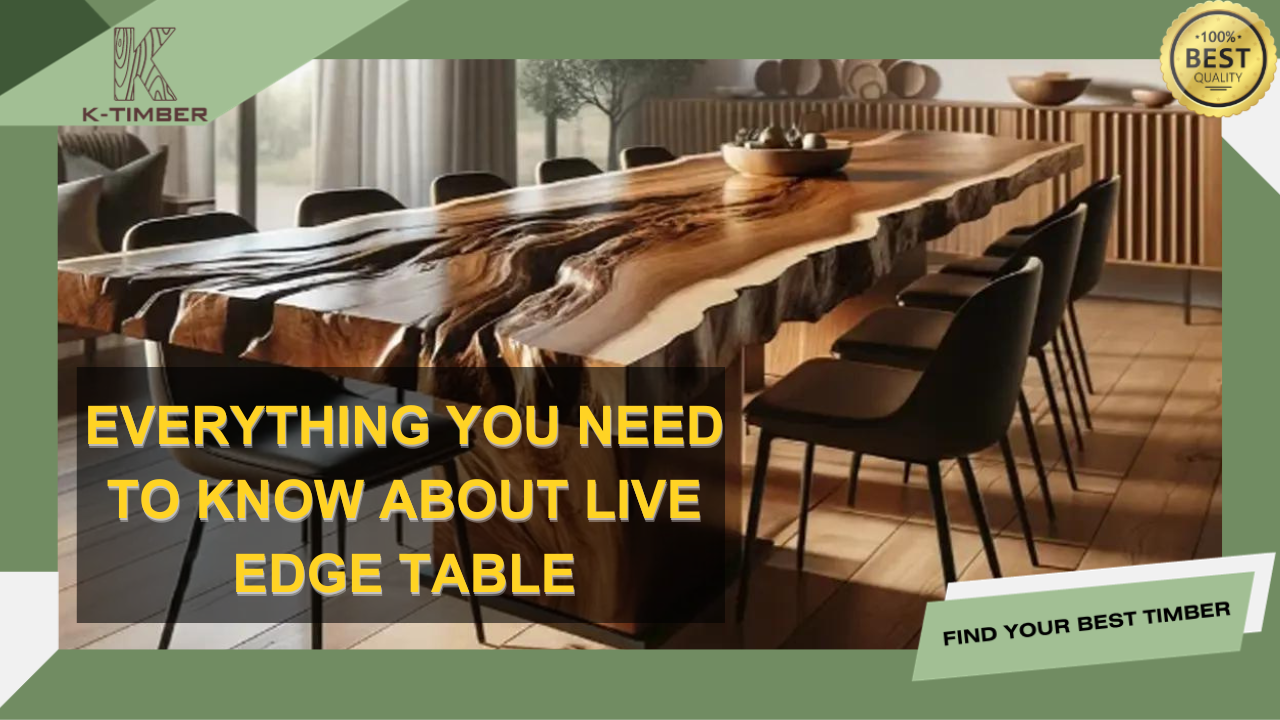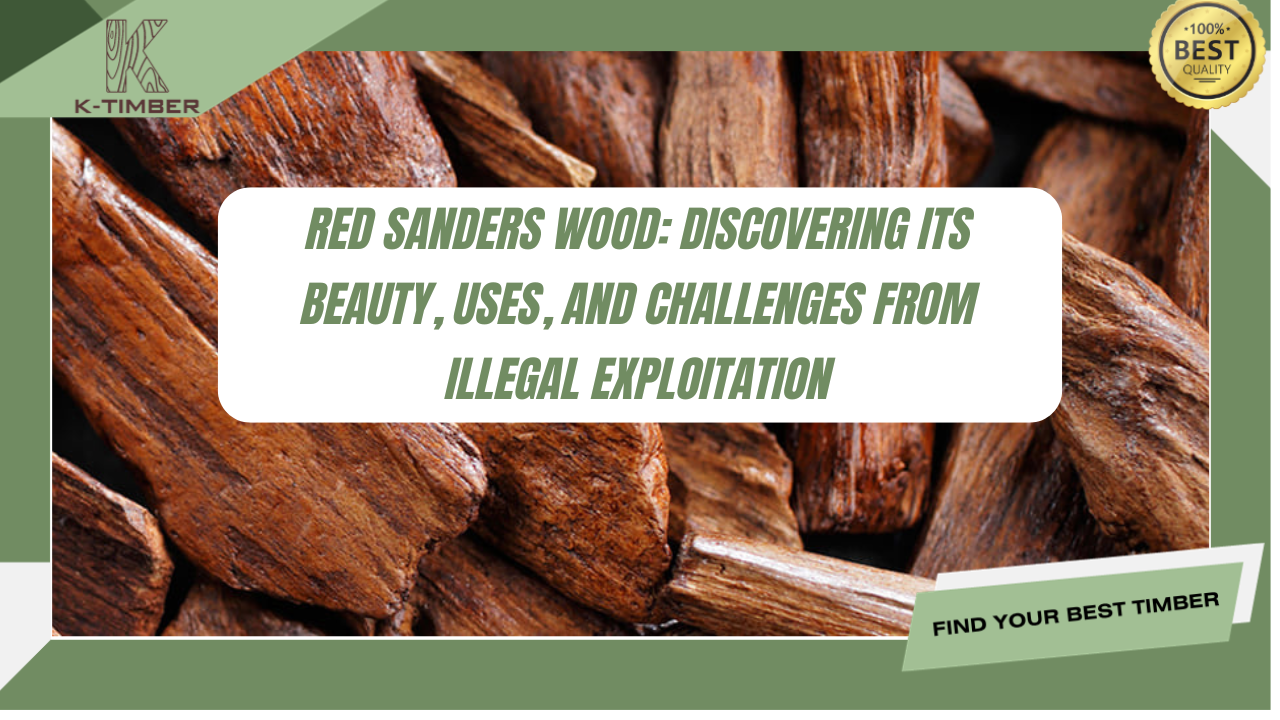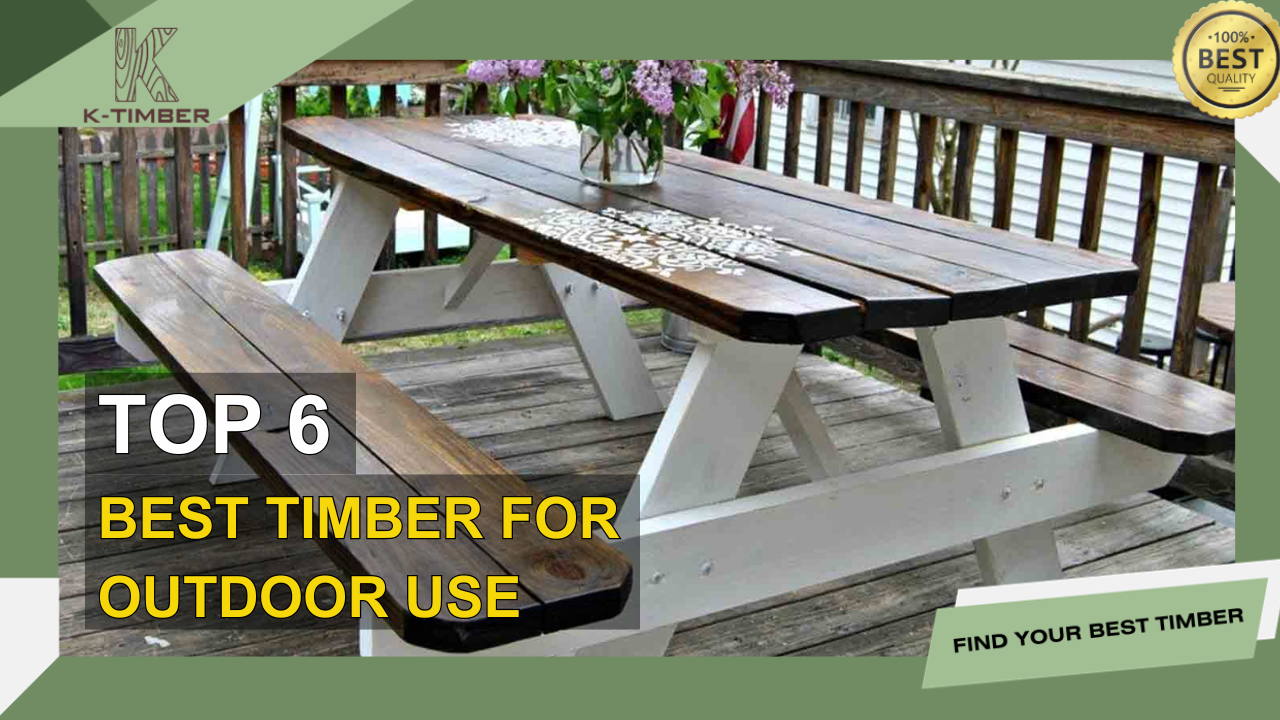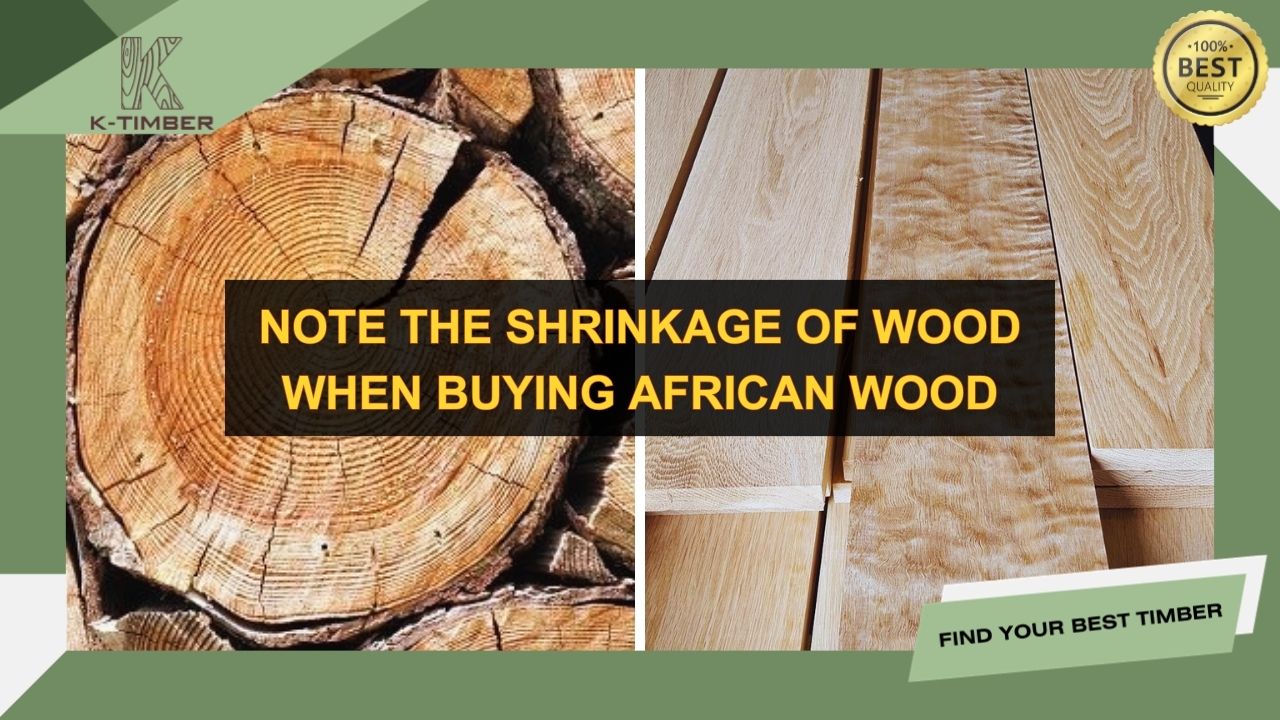Cherry wood is a beautiful hardwood, known for its rich color and fine grain, is a top choice in woodworking for furniture, cabinetry, and flooring. Its versatility, durability, and natural beauty make it highly sought after by craftsmen and designers.
In the following article, let’s explore the features of Cherry wood as well as the great uses of this type of wood with K-TIMBER.
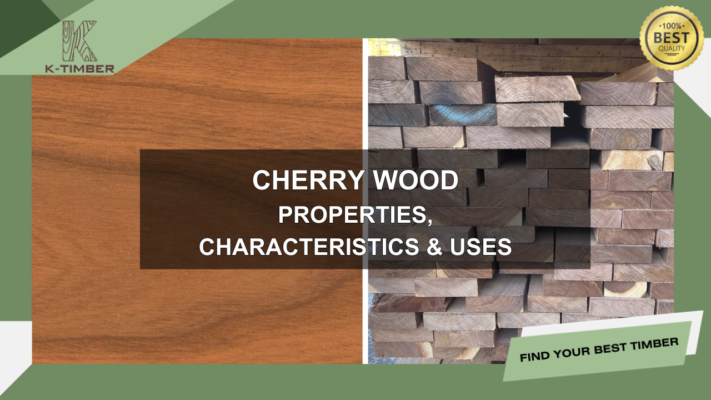
Table of Contents
Cherry Wood General Information
Cherry wood (scientific name: Prunus serotina), is known for its stunning appearance and versatility, is a popular choice among woodworkers and furniture makers. Derived from the American Black Cherry tree, this hardwood is prized for its rich color, fine grain, and smooth texture. The cherry tree grows to a height of 15 to 20 meters, sometimes reaching up to 30 meters. They can live up to 100 years, but are often cut down after 50 to 90 years due to their susceptibility to trunk rot. Cherry wood is not only used in furniture making but also in cabinetry, flooring, and other interior applications.
Cherry Wood Properties
Color and Texture
Cherry wood is renowned for its warm, reddish-brown hue, which deepens over time and exposure to light. The wood often starts with a lighter, pinkish tone and gradually darkens to a rich, reddish-brown color. Its fine, straight grain and smooth texture make it a favorite for creating elegant, high-end furniture and cabinetry. The natural luster of cherry wood adds to its appeal, providing a beautiful finish even without extensive polishing.
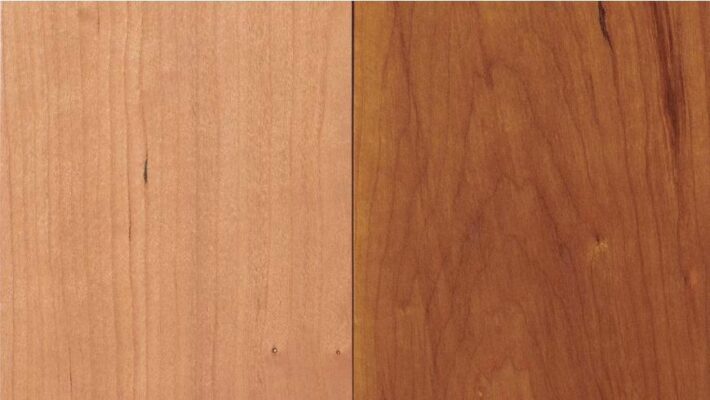
Density and Strength
Cherry wood is moderately dense and strong, with a Janka hardness rating of approximately 950 lbf. This makes it durable enough for everyday use while being easy to work with. Its strength-to-weight ratio is ideal for crafting furniture that is both sturdy and lightweight.
Workability
Cherry wood is considered one of the most efficient round woods in terms of machinability. This wood is stable, has straight grain and is easy to machine. The only difficulty usually arises if the wood is stained, as it will often produce a patchy result. Using a sanding sealer before staining or using a gel dye is often recommended to eliminate the patchy look it creates.
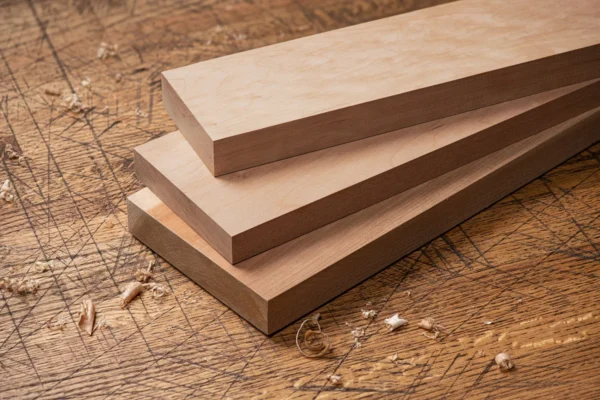
Cherry Wood Technical Properties
| TECHNICAL PROPERTIES | VALUE |
| Average Dried Weight | 35 lbs/ft³ (560 kg/m³) |
| Specific Gravity (Basic, 12% MC) | 0.47, 0.56 |
| Janka Hardness | 950 lbf (4,430 N) |
| Modulus of Rupture | 12,300 lbf/in² (84.8 MPa) |
| Elastic Modulus | 1,490,000 lbf/in² (10.28 GPa) |
| Crushing Strength | 7,110 lbf/in² (49.1 MPa) |
| Shrinkage |
Radial: 3.7% Tangential: 7.1% Volumetric: 11.5% T/R Ratio: 1.9 |
Cherry Wood Advantages
- Aesthetic appeal: Cherry wood’s rich color and fine grain make it a highly desirable material for high-end furniture and cabinetry.
- Durability: With moderate density and strength, cherry wood is built to last, making it a good investment for long-term use.
- Ease of Crafting and Shaping: Cherry wood is valued for its ease of use with both machinery and hand tools, making it a favorite among carpenters and woodworkers. It allows for smooth cutting, intricate carving, and precise joinery, making it ideal for detailed furniture and decorative work.
- Aging gracefully: Another unique advantage associated with cherry wood is its ability to age over time. Instead of the color fading like other types of wood, cherry wood tends to darken and deepen over time. This is one of the reasons why antique cherry wood furniture is so valuable
Cherry Wood Disadvantages
Cherry wood is known for its beauty, though it might not be the ideal option for everyone.
- Color variability: Cherry wood’s color change, while beautiful, can also be unpredictable. Cherry wood’s color can vary significantly, which may not be ideal for those seeking uniformity in their projects.
- Light sensitivity: Cherry wood is highly sensitive to light, leading to potential uneven darkening if not properly maintained.
- Workability challenges: Challenges in workability: Cherry wood has a major drawback: it easily cracks and warps, so it is not used for large-scale occasions but is mainly used to make furniture, toys, … Additionally, the hardness of cherry wood (Janka hardness rating of 995) requires a sharp blade to avoid chipping and messy cuts.
- Additionally, cherry wood closely resembles a species known as Southwestern birch. As a result, some businesses may substitute Southwestern birch for cherry wood. This similarity can lead to confusion, and those unfamiliar with cherry wood may unknowingly purchase furniture made from the imitation material.
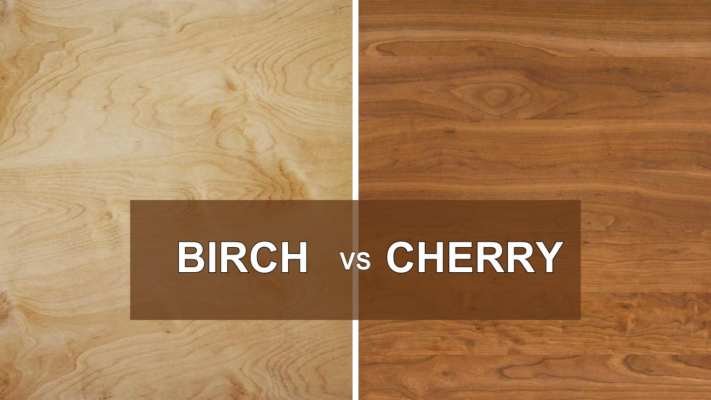
Cherry Wood Uses
Cherry wood is highly regarded for its rich color and versatility, making it a popular choice for a variety of woodworking applications. One of its most prominent uses is in furniture making, where its warm, reddish-brown hue and smooth texture create stunning pieces that range from classic to contemporary designs. Over time, cherry wood develops a deep patina, enhancing its natural beauty and making it a favorite among craftsmen.
In cabinetry, cherry wood is particularly valued for its workability and aesthetic appeal. Its fine, uniform grain allows for detailed craftsmanship, making it ideal for custom kitchen and bathroom cabinets. The wood’s rich tones add elegance and sophistication to interior spaces, making it a preferred choice for high-end cabinetry projects.
Cherry wood is also a popular material for flooring, providing both durability and warmth. Its ability to withstand daily wear and tear, combined with its beautiful natural luster, makes it an excellent choice for hardwood floors that add character to any room.
Additionally, cherry wood is widely used for interior trim, including molding, paneling, and other decorative elements. Its fine grain allows for precise cuts and intricate designs, enhancing the overall aesthetic of a space. Whether in furniture, cabinetry, flooring, or trim work, cherry wood’s combination of beauty, durability, and workability makes it a timeless and favored material in fine woodworking.
Where to Buy Cherry Wood in Bulk at the Best Price
Cherry wood is a popular and versatile hardwood with an average price range of $500-$800/m³. While it’s an excellent choice for many woodworking projects, you might want to consider alternatives that offer unique benefits.
One such alternative is Padauk wood, which has vibrant reddish-orange color and exceptional durability. Unlike cherry wood, Padauk is less prone to color variation and darkening over time, maintaining its striking appearance for years. Its high density and strength make it ideal for heavy-use furniture, flooring, and high-end cabinetry. Additionally, Padauk’s natural resistance to pests and decay adds to its longevity, making it a wise investment for long-term projects.
If you’re interested in exploring the benefits of Padauk wood further, read our detailed article on its properties and uses.
For those ready to make a purchase, contact K-Timber today to discuss how Padauk wood can elevate your next woodworking project.



